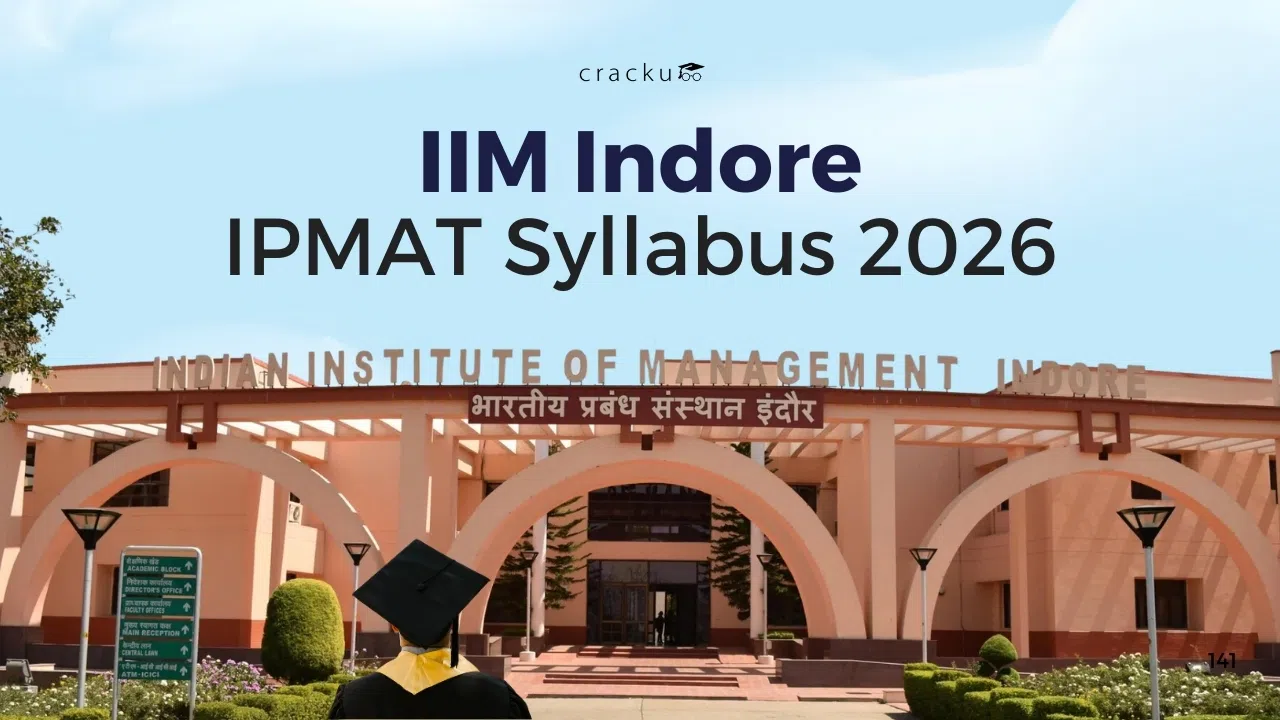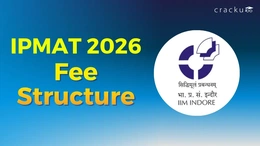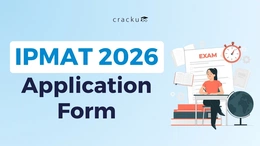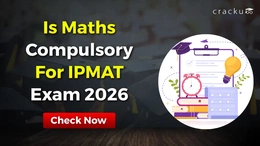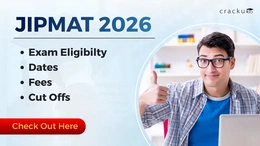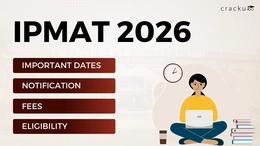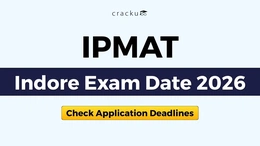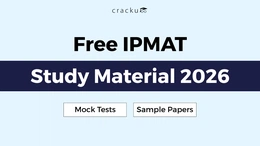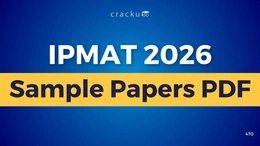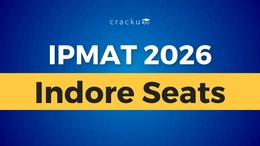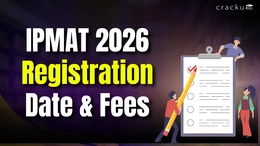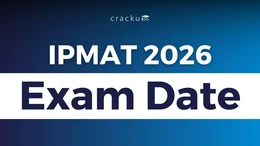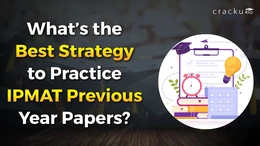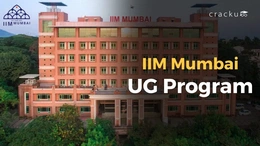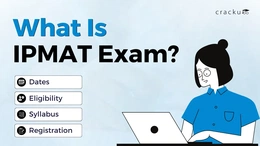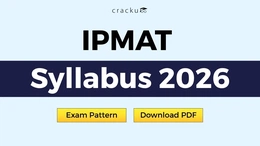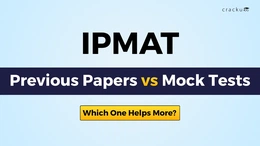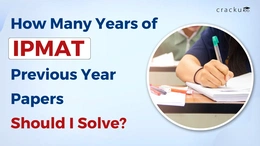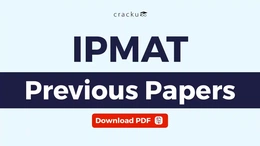IPMAT Indore Syllabus
Application of the Law of Action according to the process of achieving a goal is a demonstration of ambition and foresight, when taking the first step of enrolling in the elite five-year Integrated Programme in Management (IPM) at the Indian Institute of Management (IIM) Indore. This program, which is a direct pathway into one of the best management institutions in India after Class 12, is very competitive, and success starts to become a reality when one has a clear conception of the entrance test exam: the IPMAT.
This guide serves as the most comprehensive and strategically detailed resource for the IPMAT Indore syllabus. An essential preliminary that seems to cause much confusion among the entrants is the fact that IPMAT administered by IIM Indore is not the same as any other management entrance test. It only examines two fundamental topics, namely the Quantitative Ability and the Verbal Ability, and these two have been spread out into three sections. As opposed to the IPMAT Rohtak, the IIM Indore exam does not have its Logical Reasoning (LR) section.
Also Read, IPMAT Sample Papers 2026, Practice Tests for Indore & Rohtak
IPMAT Indore Exam Pattern
The basics of the structure of the IPMAT Indore syllabus are the knowledge that must be acquired to make an effective preparation strategy. It is a two-hour examination in a computer-based format that was established to assess the ability of a candidate in areas of mathematics and English within very strict timelines. The whole examination will be made up of three parts, and each part has a time limit.
The table below shows the grand plan of the IPMAT Indore exam scheme, in which the most reliable and stable information about the exam scheme is obtained. This gives one authoritative version of the truth about the mechanisms of the exam.
Table 1: IPMAT Indore Exam Pattern
Section | Question Type | Number of Questions | Marks for Correct Answer | Negative Marking | Sectional Time Limit |
Quantitative Ability | Multiple Choice Questions (MCQ) | 30 | +4 | -1 | 40 minutes |
Quantitative Ability | Short Answer (SA) / Type-in-the-Answer (TITA) | 15 | +4 | 0 | 40 minutes |
Verbal Ability | Multiple Choice Questions (MCQ) | 45 | +4 | -1 | 40 minutes |
There are two very crucial structural features of this exam that have significant strategic impacts on all the aspirants.
Also Read, IPMAT Registration 2025, Dates, Documents Required, Fees
Quantitative Ability (SA) Section
Unlike the other two sections, whose structure is very similar to each other and to others in other examinations, this section has a Short Answer or Type-in-the-Answer format. The following strategic information is most crucial; there are no marks cut when there is a wrong answer in this section.
- No Penalty: There is no penalty for an incorrect answer, and there is no benefit to guessing an answer; an incorrect answer here yields zero points, rather than one loss point as it would otherwise in MCQ parts.
- It implies that one should not fear making a mandatory attempt on all questions.
- The clue to smartly approach this section is that you should always have a shot at answering each of the 15 questions in this section, since there is no risk, and the reward could be four marks.
- Time Limit: All three parts are timed at 40 minutes each.
- No Switching: The candidates are not permitted to change the sections or transfer the amount of unused time between sections.
The strategic implication of this design is that the test is turned into three mini-exams with high stakes. It is not only an evaluation of subject knowledge, but also the skill in time management, the skill to choose the questions strategically, and to show the ability to produce under pressure during the given 40-minute block. Your practice should also be well-drilled and timed with the sections one by one.
IPMAT Indore section wise syllabus
To prepare well to sit in the exam, one should know how the IPMAT Indore syllabus is structured in terms of the sections. Since it has been ruled out, there are in total three components; however, only two core skills, Quantitative Ability and Verbal Ability, are tested.
Quantitative skills (QS)
Two of the three parts of the exam focus on this subject: a 30-question Multiple Choice Question (MCQ) part and a 15-question Short Answer (SA) part. Its syllabus is the same as the other one, except that the mode of questioning is different. The areas of knowledge that the test is being conducted on are quite broad, as most of the answers are based on the Class 9 to Class 12 syllabus. The broad scope of the dismemberment of the syllabus of Quantitative Ability is:
- Arithmetic
- Algebra
- Number System
- Geometry & Mensuration
- Modern mathematics (Modern Mathematics consists of Set Theory, Permutations and Combinations, and Probability)
- Data Interpretation and Logical Reasoning (which are included in the fields of QA)
Verbal Ability
There is one high-weightage section that consists of 45 multiple-choice questions to test this subject. This section contributes 50 percent of the aptitude test score out of 360 marks, which is available in this section, and therefore, this section is a deciding factor. The syllabus will test the level of control that a candidate has over the English language and his or her ability to be logical in the reasoning applied to text content. The significant items on the list of the Verbal Ability syllabus are as follows:
- RC
- Vocabulary
- Grammar
- Verbal Critical Reasoning
IPMAT Indore Quants Syllabus
The syllabus of Quantitative Ability in IPMAT Indore is major and is deemed to be more difficult than the normal syllabus of most undergraduate examinations. It requires a baseline in the concepts learnt till the higher secondary level. Broken down in terms of topics, it is as depicted below.
The significant development that can be discussed on the basis of the examination of papers published in recent years is a shift of focus in the given area towards Higher Mathematics. Although Arithmetic is supposed to form the basis, most of the questions are those of Algebra, Geometry, and Modern Math are featured particularly with the more difficult questions. A recent paper, for example, had only a small number of direct Arithmetic questions but quite a few more of them in Geometry, Algebra, Logarithms, and Progressions together. This shows that IIM Indore is trying to choose its recruits with a good analytical and mathematical background, so it becomes crucial that the aspirant should use most of the practice time on such higher-order concepts.
Arithmetic
- Profit and loss: Profit and loss, basics include the percentage increase or decrease each time, discounts, and markups.
- Simple Interest (SI) and Compound Interest (CI): rate of interest, calculation of the amount of principal money.
- Ratio, Proportion, and Variation: The properties of a ratio, proportion, and direct inverse relation.
- Averages, Mixtures and Allegations: what are weighted averages, the law of alligation, mixture of solutions.
- Time, speed, and distance: The relative speed, train speed, and boat speed, and stream or race.
- Time & Work: Problems on individual and group work and time of working, and efficiency.
- Partnerships: Division of the profits based on the money that is invested and the duration.
Algebra
- Linear and Quadratic Equations: equation solving, the Algebra of equation solutions, the nature of roots, and the construction of the equations.
- Inequalities: Solving problems of inequality, linear and Quadratic.
- Logarithm: The characteristics of logarithms, formulas of logarithms, and the use of logarithms in other areas.
- Functions and Graphs: The domain and range, types of functions, transformations of graphs, and functions that are a modulus function.
- Arithmetic progression (AP), Geometric progression (GP), Harmonic progression (HP), and summing up of progressions and series.
- Binomial Theorem: Binomial Theorem Expansion, Principal state of it, and then the Value of Binomial Coefficients.
- Names and their Correspondences: Algebraic Identities, Formulae and their usages.
Number System
- HCF LCM: A technique of finding out the Highest Common Factor and Lower Common Multiple of the numbers and the fractions.
- Rules on Divisibility: Theorem of Remainder, Cyclicity and properties of factors.
- Factorials: What facts are and some of their issues.
- Last Digits: What to do when we want to know the last digit of a huge exponent.
- Roots, Indices and Surds: laws of indices and simplification of suds.
Geometry & Mensuration
- Lines, Angles and Triangles: Properties of lines, angles and triangles of the various types (incl. of congruence and similarity).
- Circles, Quadrilaterals and Polygons: ( Circles - chords, tangents, quadrilaterals, regular polygons).
- Coordinate Geometry: Ideas of single line, circle and slope, and distance formula.
- Mensuration: measured area, perimeter, surface area, and volume of 2-dimensional and 3-dimensional figures.
- Trigonometry: Identities and Trig ratio, solution to problems ratio/distance/height.
Modern Mathematics
- Set Theory and Venn diagrams: What is a set, what is a set operation, cardinality, and what are the steps to solve problems in a Venn diagram (particularly 2-set and 3-set).
- Counting, Permutations, and Selections: Permutations and Combinations (P&C;).
- Probability: A simple theory of probability, conditional probability, and problems of P&C.;
- Matrices & Determinants: Part of basic operations on matrices, determinants, calculating, and solution of the system of linear equations.
- Vectors: Elements of vectors and their synergetics.
Data Interpretation (DI) and Logical Reasoning (LR)
- Tables and Caselets: From how to analyse data which is presented in one form in which it is represented in the form of a table and how to solve problems in caselets.
- Graphs: Interpretation and study of information using Data in Pie charts, line graphs, and Bar graphs.
- Arrangement Puzzle and Grouping Puzzle: A puzzle that can be characterized by being logic-based, where the arrangements or groupings are used as a set. This type of puzzle has begun appearing in the QA section.
IPMAT Indore verbal ability syllabus
Verbal Ability forms the sixth section of IPMAT Indore and has maximum weightage in the test. It is supposed to evaluate the English level of a candidate, starting with the peculiarities of the grammar and the vocabulary, up to the mastery of the skills to analyze and understand complex works.
The major aspect of this section is that there has been much emphasis placed upon RC Reading Comprehension. This can be analyzed in terms of recent papers where RC is always the largest single component per exam, and it can have up to three passages and 18 questions on the same exam. The text fragments are getting much longer as well as wider and broader (in the sense of touching on various subjects that can be abstract, such as philosophy or economics).
It is not without logic that such a heavy weightage and growing complexity are introduced. They are aimed at determining the speed of reading materials, concentration capability, and the ability to make higher-level analytical judgments out of complex printed reading materials under time constraints. This directly reflects the scholastic intensity of a high-level management program, in which one has to process and analyze great quantities of information at a very fast speed through case studies and research articles. Hence, the VA section serves to filter one of the most central skills of managers of the future.
Reading Comprehension (RC)
- The Passage-based Questions: These are Questions that are solved and the answer found in the passages that consist of 300-550 words.
- Main Idea, Tone & Style: Knowing the topic or theme, the way a writer may be critical, analytical, or narrative, and the style that the writer may be using.
- Issues of logic and assumption: A logical conclusion and points of assumptions during the reading.
- Factual & Application Questions: Positioning of particular information and the practical application to a particular situation.
- Titles and what would be the best recap of the passage?: The best title and passage summary.
Vocabulary
- Synonyms & Antonyms: cognizing the meaning of a word, its opposite, and in many cases, at least in a passage of readings.
- Idioms, Phrases and Phrasal Verbs: Idiomatic expression: Being aware of the meaning and proper usage of widely and not so widely used idiomatic phrases.
- Foreign Words & Etymology: Anything well-known to common use (Latin or French, etc.) first, second, & last, carried on by way of etymology of words.
- Analogies: The comparison of an existing connection between two words and then seeking an equivalent connection in other two words.
- One-Word Substitution: In this case, the replacement of a phrase or a sentence with a single word.
- Confusing Words and Homonyms: Learning to know the distinction among the words that sound similar and yet still mean some other thing (e.g., affect/effect).
- Fill in the blanks and contextual vocabulary: It is an activity in which one is expected to be able to use the right word in filling in the sentence as per the situation.
- Cloze Test: A type of NT where one is supposed to fill in several gaps in a passage in order to make a piece of writing coherent.
Grammar
- Tenses and subject-verb agreement: proper use of tenses and having the consistency that there is agreement between the subject of the verb and the verb itself.
- Part of Speech: The training on the use of Nouns, Pronouns, Adjectives, Verbs, Adverbs, prepositions, and Conjunctions.
- Modifiers/Parallelism: Ensuring the use of modifiers and the use of the modifier itself, and also the structures are grammatically parallel in the sentences.
- Voice & Speech: The voice active and active passive, and speaking a voice changing between the first and second forms of voice. Direct and Indirect Speech.
- Spotting of errors and selection of sentence correction: This is where we can literally spell out the grammatical error in the sentence, and then the best choice amongst the given choices.
Critical Reasoning Verbal
- Para-jumbles (Sentence Rearrangement): To place a paragraph with a collection of scrambled sentences to your styleverb ruin (To destroy): To kill
- Para-completion: The process of picking out the most sensible part of a paragraph as far as completion is concerned.
- Odd One Out: The one that sounds like it does not fit in the situation of a paragraph.
- Logical Consistency and Deductive Reasoning: The ability to think using arguments and to logically deduce issues at hand.
Also Take, IPMAT Mock Test
IPMAT Indore important topics
Having a good plan means more than being aware of what the syllabus is; it means you have to know how significant various areas of interest are as compared to each other. This is the Pareto Principle, which is commonly seen to be true of competitive exams: a small percentage of the topics can fetch a large amount of the total marks. These high-impact areas, which can guide you to focus your energy based on the current trends in the IPMAT Indore syllabus, are given below following an analysis of the trends in the recent IPMAT Indore papers.
Another dramatic transformation regarding the nature of the exam is the appearance of integrated reasoning in the form of questions. The recent papers have included sets of Logical Reasoning style questions, like grouping of data or set arrangement, in the Quantitative Ability sections themselves. Also, questions are becoming more mixed-concept, that is, a probabilistic question that needs an appreciation of geometric progressions to be answered. This change implies that the test is leaving behind the examination of discrete areas in isolation and going towards measuring integrated skills of dealing with problems. This is not an accidental practice to find the candidates that have the ability to think out of the box and transfer the knowledge into various directions, which is highly important for future managers. That is why memorization of formulas is not enough; real fluency in concepts is required to achieve success.
Also Read, IPMAT Previous Year Papers, IIM Indore & Rohtak Papers PDF
Bonus: Good Books
It is impossible to overstate the importance of a well-developed strategy and the fact that the right kind of study material is the key. Judging by all the common suggestions by the pros, as well as the training programs, the following books are valued highly in terms of achieving success in the IPMAT Indore exam.
Important Topics in Quantitative Ability
The table below gives a priority list of the study to do sections for the QA, so you can spend the best time you have to achieve the best value of time spent.
Table 3: High-Impact Topics in Quantitative Ability (Based on Weightage)
Priority | Topic Area | Key Topics to Master | Approximate Question Weightage (out of 45) |
High | Geometry & Algebra | Coordinate Geometry, Circles, Triangles, Logarithms, Progressions (AP/GP), Quadratic Equations, Functions | ~10 to 14 questions |
High | Data Interpretation & LR Sets | Table-based DI, Caselets, Arrangement/Grouping Sets | ~5 to 8 questions (often as sets) |
Medium | Modern Math | Permutations & Combinations (P&C;), Probability, Set Theory | ~4 to 6 questions |
Medium | Number System | Remainders, Divisibility, HCF/LCM, Factorials | ~2 to 3 questions |
Foundation | Arithmetic | Percentages, Profit & Loss, TSD, Time & Work (concepts are often embedded in other questions) | ~3 to 5 standalone questions |
Important Topics in Verbal Ability
This table helps to have an overview of the critical area in the VA section, and thus it confirms the dominance in the Reading Comprehension area and gives some insight into the composition of the other questions as well.
Table 4: High-Impact Topics in Verbal Ability (Based on Weightage)
Priority | Topic Area | Key Topics to Master | Approximate Question Weightage (out of 45) |
High | Reading Comprehension (RC) | "Inference-based, Factual, Main Idea, and Tone questions across diverse passage types" | 12 to 18 questions |
Medium | Verbal Reasoning | "Para-jumbles, Para-completion, Odd One Out" | ~8 to 10 questions |
Medium | Vocabulary in Context | "Idioms & Phrases, Phrasal Verbs, Fillers, Synonyms/Antonyms, One-Word Substitution" | ~8 to 12 questions |
Foundation | Grammar | "Sentence Correction/Error Spotting based on Tenses, Subject-Verb Agreement, Parallelism" | ~5 to 7 questions |
IPMAT Indore Syllabus 2026: Conclusion
To crack IPMAT Indore 2026, you need a clear idea of the syllabus and exam pattern along with strong subject knowledge. The exam has three timed parts—QA MCQ, QA SA/TITA, and VA MCQ. Success depends on speed, accuracy, and focusing on the right topics. In recent years, more questions have come from Algebra, Geometry, Modern Math, and Data Interpretation in QA, while Reading Comprehension has been the most important part of VA. Also, keep in mind that MCQs have negative marking, but TITA questions do not.
Plan your preparation around the important topics first and then practice with sectional mocks that follow the 40-minute time limit. For QA, revise your basics from Classes 9–12 and practice higher-level problem sets. For VA, work on your reading speed, comprehension, and inference-based questions. With steady practice, proper time management, and focused revision, you can turn the IPMAT Indore syllabus into a simple study plan and boost your chances of getting into the prestigious five-year IPM program.
